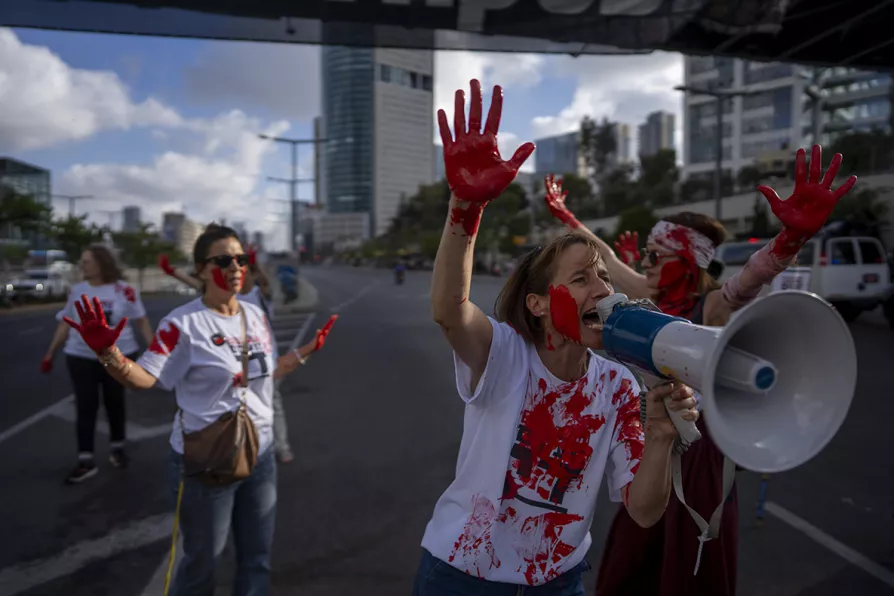
 Mothers of Israeli soldiers who serve in Gaza hold up their hands, painted red to symbolize blood, and block a road during a protest calling to end the war, in Tel Aviv, Israel, Wednesday, May 29, 2024
Mothers of Israeli soldiers who serve in Gaza hold up their hands, painted red to symbolize blood, and block a road during a protest calling to end the war, in Tel Aviv, Israel, Wednesday, May 29, 2024
IN THE apartment of my friends in Baghdad, Iraq, they tell me about how each of them had been impacted by the ugliness of the 2003 US-imposed illegal war on their country. Yusuf and Anisa are both members of the Federation of Journalists of Iraq and both have experience as “stringers” for Western media companies that came to Baghdad amid the war.
When I first went to their apartment for dinner in the well-positioned Waziriyah neighbourhood, I was struck by the fact that Anisa — whom I had known as a secular person — wore a veil on her face.
“I wear this scarf,” Anisa said to me later in the evening, “to hide the scar on my jaw and neck, the scar made by a bullet wound from a US soldier who panicked after an IED went off beside his patrol.”

STEPHEN ARNELL wonders at the family resemblance between former prince Andrew and his great-uncle ‘Dickie’













